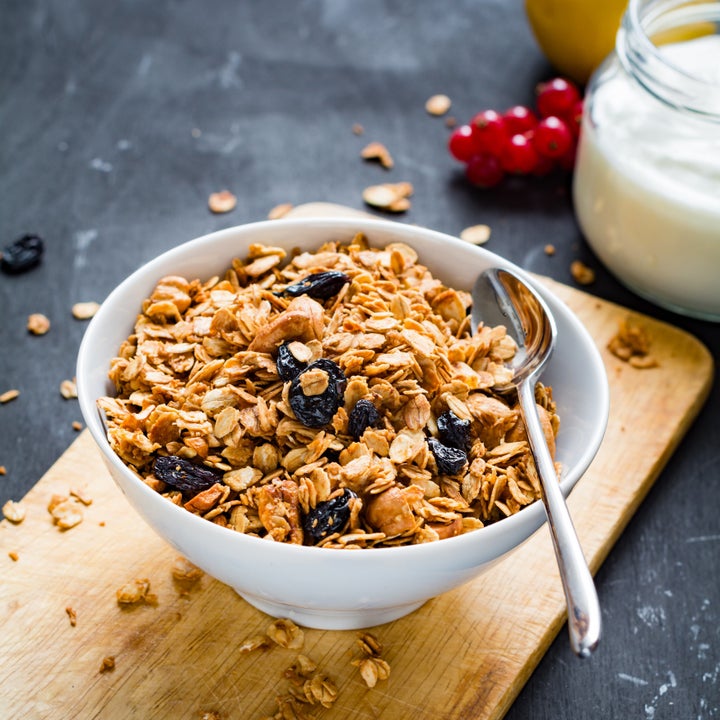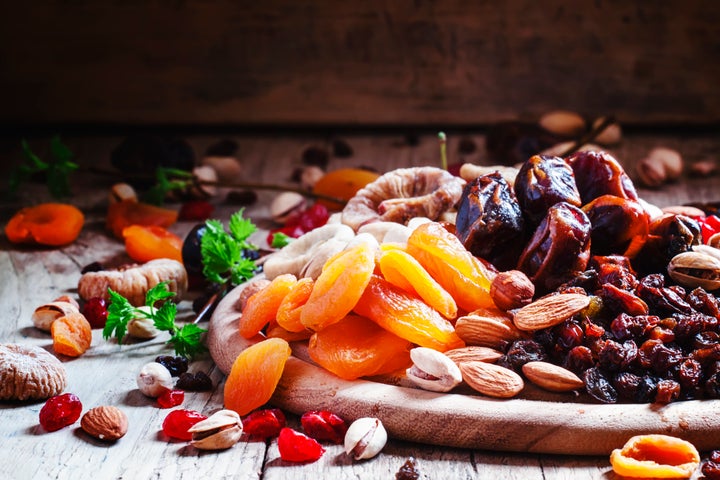The concept of eating healthy is a simple one: eat lots whole grains, fruits and vegetables, and stay clear of sweets. But successfully making that happen these days ― when so much of our food is packaged ― is a lot trickier than you might expect. Many go-to health food options are actually not as good for you as they seem. Are you being fooled by some?
Chances are, there are one or two items in the list below that are derailing your healthy-eating efforts. Check out what they might be and steer clear.

1. Granola: A serving size of granola is a lot smaller than you think. If you’re filling a cereal bowl of the stuff with milk, chances are you’re taking in a lot more sugar than you want. Granola is better eaten sprinkled on top of yogurt than used in place of cereal. If you don’t want to give up your beloved granola entirely, try making your own. Homemade is better than store-bought because you know what ingredients are being put into it. Try a couple of these recipes, and you’ll soon be converted.
2. Agave: Whether or not agave is healthy is up for debate. But at the end of the day, it’s still added sugar to your diet. And too much sugar in any form is not recommended.
3. Bran muffins: We know it sounds healthy. What could be so bad about a food with bran in it? Sadly, the truth is that a muffin is still a muffin no matter what ingredients have been added to it. And that means it’s basically a cupcake with no frosting on it ― in other words, its loaded with added sugar and fat. Plus, most bran muffins contain more wheat flour than actual bran. The best way to make sure that your muffin is actually made with whole grains is to make it yourself.
4. Juice cleanses: Think about it ― those store-bought juice cleanses mean you’re drinking a lot of juice. It’s better to eat the fruit or vegetable rather than a juiced version of it because you lose the fiber when you juice. Actually, most healthy eating sources will tell you to steer clear of juice altogether. So-called “detox” juices offer more nutrition than your run-of-the-mill store-bought juice, but drinking them in place of a meal means you’re missing out on protein and taking in way too much sugar.

5. Dried fruit: Yes, eating dried fruit is probably a healthier choice than the cookie you actually wish you were eating. But you should know that dried fruit is still a sugary treat. The sugar that’s usually added to dried fruit make it more like candy than fruit at all. But not all store-bought dried fruit has added sugar, just be sure to check the label and choose wisely.
6. Flavored yogurt: They flavor it with sugar. Lots of it, too. Sure, yogurt is a good choice, but you’ve got to eat it plain (or with fresh fruit on top).
7. Energy and protein bars: These options sound healthy, but most of them are basically just candy bars. Many are loaded with sugar and have more calories than you’d expect. Consider making your own, then you’ll know exactly what’s in them.

8. Frozen yogurt: Just eat the ice cream. Sure, frozen yogurt has less saturated fat than ice cream, but once you load it up with toppings that are sugar and fat-loaded it can often times wind up as unhealthy a choice as ice cream.
9. Peanut butter (and other nut butters): These are a healthy, protein-rich option when eaten in moderation, but only if you buy natural varieties that have no more than two ingredients. Some nut butters ― like the reduced fat kind ― have sugar added in the form of high fructose corn syrup, making this seemingly “smart” snack option not so smart after all.
10. Smoothies: Smoothies aren’t necessarily bad for you if made with fresh fruits and vegetables. But be careful of serving size and where you get one. Pre-made smoothies and store-bought ones can be loaded with sugar and calories. It’s safer to just make your own.
11. Canned soups: Soup is often a healthy meal choice, but when it’s canned it comes with more sodium than is good for you. Excess sodium can make you feel bloated and sluggish. Soup is easy to make; too easy, actually, to not go the homemade route.